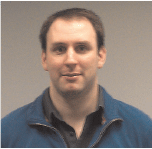Advances in marine electromagnetic (EM) efficiency with a towed acquisition system
F. Engelmark A , J. Mattsson A and J. Linfoot APetroleum Geo-Services.
The APPEA Journal 52(2) 699-699 https://doi.org/10.1071/AJ11113
Published: 2012
Abstract
A towed marine EM system has been developing since 2004 where both source and receivers are towed behind the same vessel in an arrangement similar to 2D streamer seismic. This is an ideal technology for reducing risk in hydrocarbon targets in general and low saturation gas in particular, as well as the monitoring of CO2 sequestration. The dipole source is 400 or 800 m long and towed at 10 m below the sea surface.
The receiver cable is towed at 100 m depth and has receiver offsets between 500 and 8,000 m. A transient source signal is used, allowing deterministic deconvolution of the source signature, which can be of any shape; for example, square wave, PRBS, or optimised repeated sequence (ORS). There are multiple benefits of the towed EM system:
-
Similar in operation to a marine streamer seismic.
-
Improved survey efficiency with source and receivers towed by the same vessel.
-
Real-time monitoring of source and receivers, and quality control of incoming data.
-
Onboard pre-processing.
-
Dense sub-surface sampling.
-
Receivers towed above the seafloor—the influence of strong local anomalies at the seabed is thus minimised.
-
Facilitates simultaneous acquisition of EM and 2D seismic.
Successful field tests were conducted in mid-2010 over the Peon gas field and the Troll oil and gas field in the Norwegian sector of the North Sea. A total of 615 line km were acquired during 138 hours, and the data has been successfully processed and inverted to delineate all targets.

Folke holds an MSc in geophysics from Colorado School of Mines. He has been in the geosciences since 1974 first in academia then as an exploration geophysicist for the mining industry in Sweden in the late 1970s. Since 1980 he has been exclusively involved with the oil and gas industry, specialising in rock physics and integrated seismic reservoir characterisation solutions such as two- and three-term inversion, fluid analysis (AVO), time-lapse, pore pressure prediction, fracture characterisation, gas hydrate evaluation, geomechanics, and electromagnetic methods. He has both oil-company experience from Shell and Pennzoil (1990–95) as well as major service-company experience from Schlumberger (1996–2005) and now Petroleum Geo-Services where he is geoscience advisor in Asia Pacific. He has authored/co-authored more than 30 technical papers, two of which have won best paper awards, and presented one invited paper at AAPG as ‘Best of the SEG’. |

Johan Mattsson is a managing director at PGS, where he heads the system and signal processing project for towed EM. He earned a PhD in engineering mechanics in 1996 from Chalmers University of Technology in Gothenburg, Sweden. He has worked primarily with forward and inverse wave propagation modelling, as well as analysis of experimental data. |

John Linfoot is the section manager for the EM Geophysics section in Edinburgh, where he heads the modelling and inversion project. He has been with PGS for six years having gained an MSc in exploration geophysics from Leeds University, and has worked mainly on modelling, inversion and interpretation of EM land, and marine data. |
References
Amundsen, H.E.F., Johansen, S., and Rosten, T., 2004—A Sea Bed Logging (SBL) calibration survey over the Troll Gas Field. 66th European Association of Geoscientists and Engineers (EAGE) Conference and Exhibition, Paris, France, 7–10 June, E019.Anderson, C., and Mattsson, J. (2010). An integrated approach to marine electromagnetic surveying using a towed streamer and source. First Break 28, 71–75.
Ellingsrud, S., Eidesmo, T., Johansen, S., Sinha, M.C., MacGregor, L.M., and Constable, S. (2002). Remote sensing of hydrocarbon layers by seabed logging (SBL): Results from a cruise offshore Angola. The Leading Edge 21, 972–82.
Jurgen, J.Z., Frenkel, A.M., Ostvedt-Ghazi, A.M., De Lugao, P., and Ridyard, D., 2009—Marine CSEM methods for 3D hydrocarbon field mapping and monitoring. 11th International Congress of the Brazilian Geophysical Society, Salvador, Brazil, 24–28 August, SO-18.


